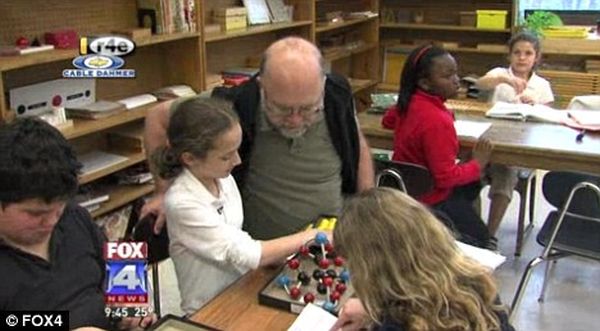The world can surely be a much interesting, fantastic yet a bit eccentric place when unintentional gamma blasts turn scientists into robust green monsters or when scrawny teenagers get bitten by spiders to turn into wall crawling mutants. But, that only happens in the realm of Hollywood, comics and fiction pieces, right? Wrong, in a curious twist of destiny, it was a 10 year old girl who accidentally discovered a molecule, which can be potentially explosive in nature.

It all started as a simple science assignment, in which elementary students were asked to build molecular structures from modelling kits consisting of colorful balls and plastic rods. But, this time, a fifth grader, Clara Lazen, randomly created a complex structure with a combination bearing of oxygen, nitrogen and carbon atoms. Now, the act may have been simply fortuitous from the student’s perspective. But, according to her chemistry teacher, Kenneth Boehr, the unique structure was ‘right’ in every sense of the word, as its stability is defined by the complete connection of all the atoms, the colorful balls in this case.
So, clearly amazed by this unforeseen development, Boehr communicated with his friend Robert Zoellner, who is a computational chemist at Humbolt State. Upon seeing the images of the exclusive molecular set up, he consulted the Chemical Abstracts, a comprehensive online database of detailed chemistry research. The closest match found was nitroglycerin, which is as we all know, an active ingredient used in dynamites.
Obviously, in this extraordinary case, the molecule had a different structural arrangement. Christened as the tetranitratoxycarbon, this alteration in arrangement, is what led them to believe that their discovery alludes to a completely new molecule, similar to nitroglycerin.
And now comes the conscientious part: Zoellner actually believes that this newest molecule can be experimentally produced to watch out for potentially beneficial applications. As a matter of fact, the unexampled structure might even have the capacity to store energy.
Finally, coming to the impact of the discovery in itself, the team has already forwarded their findings to the journal of Computational and Theoretical Chemistry, which is slated to be published shortly. And yes, in case you are wondering, the student and the teacher has also decided to split the prize money between them.
Via: SmartPlanet




